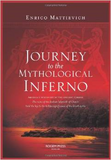Cadmus and Viracocha, by Enrico Mattievich
Discovery of Brazil by Cadmus (part one)
In this article I try to explain how I found that the famous myth of Herakles slaying a hundred-headed Drako which guarded the golden apples of the Hesperides, narrated as a stellar myth by Hyginus, is related with the stellar myth of “Cadmus slays the serpent” preserved by Ovid, and both myths I interpret as geographical allegories of the heroic conquest of the Amazon River. The garden of Hesperides, with its golden fruits, is related to the garden of Coricancha, preserved and worshiped at Cuzco from ancient times, with plants and fruits made of gold. To confirm this thesis would require archaeologists to conduct comprehensive work on stratigraphic dating at Sacsahuaman cyclopean fortress, which, instead of having only 100 years of antiquity before the Spanish Conquistadores, as assigned by the official story, is more than 3200 years old.
The article (part 1) in pdf
Cadmus and Viracocha (part two)
....The most telling information concerning a civilizing god can be found in the Viracocha myths. The origin of Viracocha, whose strange name means “fat of the sea,” and the legends surrounding him, form part of the great enigma of the Inca civilization. Among the various and confusing narratives compiled after the Spanish conquest, that of Pedro Gutierez de Santa Clara, in the late 16th century, stands out for being simple and informative.
In the villages of Paita, Puerto Viejo, and on Apuna Island, Gutierez[1] relates, the Indians used, since times immemorial, rafts of light wood (balsa wood) and bamboo, with triangular sails and a rudder. They explained that their forefathers learned this from a man who came from the sea, arriving on those shores in a raft with a sail similar to the one they use now, and called him Viracocha, which means “foam of the sea” or “fat of the sea,” who was engendered by the sea, fatherless and motherless. Likewise the Spaniards, who arrived from the sea, were called Viracochas. This curious mythological fragment from the northern coast of Peru shows a navigating Viracocha, merely one facet of the Viracocha myth.
[1] Santa Clara, Gutierez de, cited by Henrique Urbano in Wiracocha y Ayar, p. 16, Cuzco, 1981.
The article (part 2) in pdf
Enrico Mattievich

In 1962 - 63, he worked as an assistant to Dr. Mutsumi Ishitsuka, astronomer at the Department of Solar Activity at the Geophysics Observatory in Huancayo. In 1969 he undertook postgraduate studies at the Centro Brasileiro de Pesquisas Fisicas, in Rio de Janeiro, on a Ford Foundation Fellowship, and received his Ph. D. degree in Physics in 1974. He continued his academic career at the Department of Physics at the Federal University of Rio de Janeiro, completing several studies in physics applied to mineralogy, paleontology and archaeology.
Since 1981, after visiting the archaeological site of Chavin de Huantar, and moved by the strange art and advanced architecture of that Peruvian culture, he has dedicated himself to the study of comparative archaeology and mythology.
In 2000, he was invited, by the School of Physics and Material Engineering at Monash University, in Melbourne, Australia, to conduct research on a hundred-year-old geologic enigma, the 'Zebra Rock'. Dr. Mattievich was able to demonstrate that the strange patterns of Zebra Rock (a silt stone) was formed from a liquid crystal phase coloidal solution, deposited under glacial conditions, at the bottom of the sea, in the Upper Proterozoic era, more than 600 million years ago.


